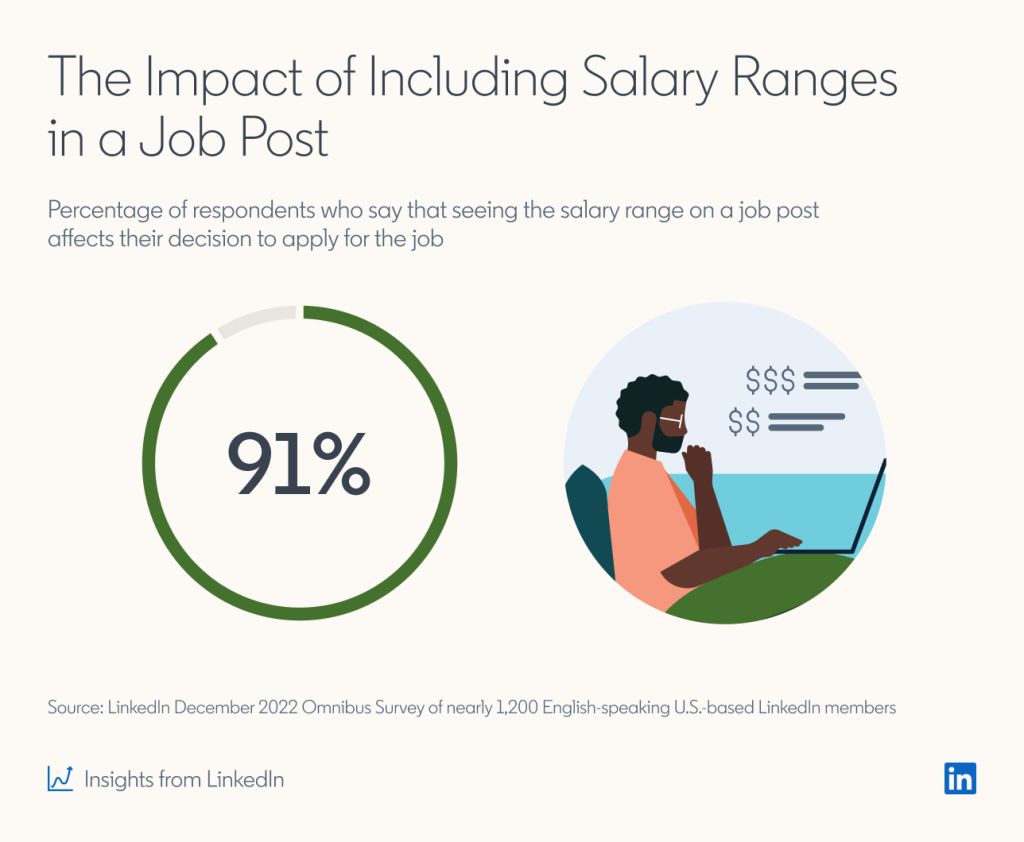Salary Range Disclosure on Adverts - Pro's, Con's and Best Practice Solutions
Deciding whether to include salary details in job advertisements is a significant consideration for employers. The push for pay transparency is becoming increasingly prevalent among job seekers, who are vocal about their desire to see salary information upfront. Substantial data backs this movement; according to research for SEEK, 87% of job seekers regard knowing the salary before applying as extremely important, with 83% feeling more optimistic about a potential employer that discloses this information. Many recruiters argue that including salary in job ads meets candidate expectations and provides distinct advantages to the employer.

Benefits of Including Salary in Job Ads
From the employer's perspective, there are several benefits to including salary in job postings:
Improved Candidate Quality and Relevance: Employers are likely to attract candidates who are a better fit for the role when they list the salary. This transparency reduces the volume of unqualified applicants, streamlining the recruitment process and saving time.
Enhanced Company Standing in a Competitive Market: By being upfront about salary, companies can differentiate themselves in crowded job markets, appealing more to potential employees looking for transparent and equitable employers.
Promotion of Equality and Diversity: Listing salary ranges can aid in addressing pay disparities across gender and diversity lines, fostering a more inclusive workforce.
Positive Employer Branding: Transparency in salary matters contributes positively to the company's image. Candidates often view salary-disclosing employers as more honest and employee-centric, which can enhance the company's attractiveness.
Setting Clear Expectations: Both parties enter the recruitment process with a clear understanding of the financial offer, which can prevent misunderstandings and ensure that time is spent wisely.
Drawbacks of Salary Disclosure in Job Ads
Despite the advantages, there are potential drawbacks to consider:
Reduced Flexibility: Disclosing salary ranges might limit the company's ability to negotiate with particularly strong candidates who may command a higher wage.
Confidentiality Issues: Salary disclosure might lead to internal tension if current employees feel they are being paid unfairly compared to new hires listed in the ads.
Attraction of Unqualified Candidates: Some job seekers might apply solely based on the salary, regardless of their suitability for the position.
Negotiation Limitations: showing the salary can curb the employer's power in salary negotiations, potentially leading to a less favourable financial outcome for the company.
Impact on Smaller Businesses: Smaller companies, which often have tighter budgets, may need help to compete with larger corporations in terms of salary offerings, potentially limiting their ability to attract top talent.
Legal Considerations
In jurisdictions like California, Colorado, and New York, laws require that job postings include salary ranges. These legal requirements are becoming more common and strongly motivate employers to include pay transparency in their job ads. The European Union's Pay Transparency Directive is another example of legislation that reduces the pay gap and increases transparency. Compliance with these laws is not only about legal adherence but also reflects a commitment to fairness and equity in the workplace.
Strategic and Practical Considerations
Employers must also consider strategic factors when listing salaries in job ads. Factors like company size, industry competitiveness, and regional economic conditions play a crucial role in this decision. For example, the salary range for the same role could vary significantly between cities or states, reflecting the local cost of living and market conditions.
Best Practices for Salary Disclosure
If an organisation decides to include salary ranges in job postings, several best practices can help maximise the benefits and minimise potential issues:
Comply with Local Regulations: Ensuring compliance with pay transparency laws is crucial.
Develop a Clear Compensation Strategy: Understand and outline how salary ranges fit within the company's overall compensation strategy.
Prepare Management: Train managerial staff to discuss pay with team members, especially in the context of increased transparency.
Define a Target Hiring Range: A more targeted salary range can effectively manage candidate expectations instead of a broad range.
Include Total Compensation Details: Besides the base salary, include information about bonuses, benefits, and other perks that might attract candidates.
Ensure Internal Consistency: Regular compensation reviews can help maintain fairness and transparency, aligning actual salaries with those advertised.
Communicate Clearly with candidates about how salaries are determined and with existing employees to maintain trust and satisfaction.
Ultimately, whether to include salary ranges in job postings is an organisation's decision based on its specific circumstances, values, and the legal framework within which it operates. While the trend towards greater transparency is growing, companies should carefully weigh the pros and cons, consulting with HR professionals to craft a strategy that aligns with their recruitment goals and organisational ethics. As this practice becomes more common, the standards for what constitutes a fair and attractive job advertisement will likely continue to evolve, influenced by societal expectations and legislative changes.



